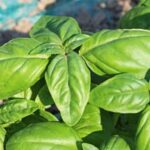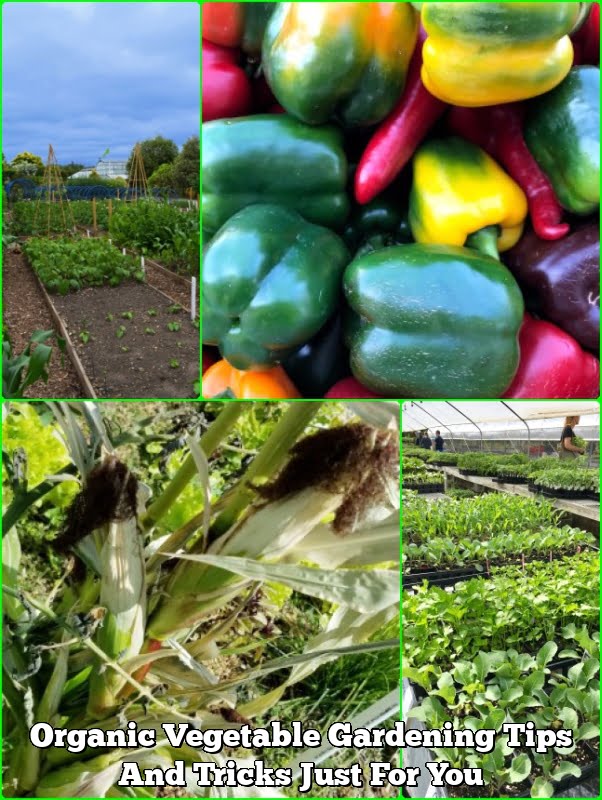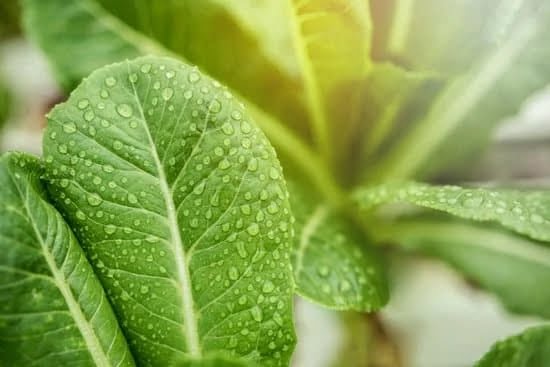Are you looking to start your own vegetable garden but not sure where to begin? Whether you’re a beginner or experienced gardener, these vegetable gardening tips and tricks will help you get started and maintain a thriving garden. From choosing the right location to harvesting and maintenance, we’ll cover everything you need to know for a successful vegetable garden.
The first step in starting a vegetable garden is to gather the essential tools and supplies. You’ll need items such as trowels, hand pruners, gloves, watering cans, and soil amendments to ensure that your garden has the best possible foundation for growth. Additionally, having a good set of gardening tools will make the process of maintaining your garden much easier.
Once you have your tools in place, it’s important to consider the location of your vegetable garden. Factors such as sunlight, soil quality, and drainage play a crucial role in the success of your crops. We’ll provide expert advice on how to choose the right location for your garden and how to prepare the soil for optimal growing conditions.
By following these tips, you can set yourself up for a bountiful harvest of fresh vegetables. So let’s dive into the world of vegetable gardening and learn how to create a thriving and sustainable food source right in your backyard or community plot.
Choosing the Right Location
When it comes to vegetable gardening, one of the most crucial steps is choosing the right location for your garden. Sunlight, soil, and drainage are all key factors that can greatly impact the success of your vegetable garden.
Sunlight
Choosing a location that receives ample sunlight is essential for a thriving vegetable garden. Most vegetables require at least 6-8 hours of direct sunlight per day. Take note of how the sun moves across your yard throughout the day and select a spot that gets the most consistent sunlight.
Soil
The quality of the soil in your chosen location is also critical for successful vegetable gardening. Conduct a soil test to determine its pH level and nutrient content. Based on the results, you may need to amend the soil with compost, peat moss, or other organic matter to improve its fertility and structure.
Drainage
In addition to sunlight and soil, good drainage is essential for a healthy vegetable garden. Poorly draining soil can lead to waterlogged roots and rotting plants. Choose a location with well-draining soil or consider implementing raised beds or containers if natural drainage is an issue in your garden area.
Overall, carefully considering sunlight, soil quality, and drainage when selecting the location for your vegetable garden will set you up for success in growing healthy and thriving crops. These are all essential aspects of vegetable gardening tips and tricks that can help ensure a bountiful harvest at the end of the season.
Selecting the Best Vegetables for Your Garden
When it comes to vegetable gardening, choosing the right vegetables to grow in your garden is crucial for a successful harvest. Consider the seasonal considerations and space requirements before making your selections. One important aspect to consider is the climate in your area and the different growing seasons.
Some vegetables thrive in cooler weather while others prefer the heat of summer. Take into account the average temperatures and frost dates in your area to determine which vegetables will do best in each season.
Another factor to consider when selecting vegetables for your garden is the space available. Some vegetables, such as tomatoes and cucumbers, require more room to spread out and grow, while others like lettuce and radishes can be grown closer together. Take stock of how much space you have available for planting and choose vegetables that are well-suited to that space.
Here are some popular vegetable options for different seasons:
- Spring: Lettuce, spinach, peas, carrots
- Summer: Tomatoes, peppers, cucumbers, zucchini
- Fall: Broccoli, kale, Brussels sprouts
Remember that these are just general suggestions and there may be other factors specific to your location that could impact what grows best in your area.
| Vegetable | Best Season |
|---|---|
| Lettuce | Spring |
| Cucumbers | Summer |
| Kale | Fall |
Preparing the Soil
When it comes to vegetable gardening, preparing the soil is a crucial step in ensuring a successful harvest. Before planting your vegetables, it’s important to test the soil to determine its pH level and nutrient content. You can purchase a DIY soil testing kit or send a sample to a professional lab for analysis.
Once you have the results, you can then amend the soil as needed by adding organic matter, such as compost or aged manure, to improve its texture and fertility. This will provide your plants with the necessary nutrients for healthy growth.
Proper bed preparation is also key to successful vegetable gardening. Whether you’re using raised beds or planting directly in the ground, it’s important to clear the area of any existing vegetation and weeds. This will prevent competition for nutrients and minimize the risk of disease.
Next, loosen the soil to a depth of at least 12 inches to create a loose, aerated environment for root growth. Adding a layer of mulch on top of the prepared bed will help retain moisture, suppress weed growth, and regulate soil temperature.
In addition to testing and amending the soil, timing is also important when preparing your vegetable garden beds. It’s best to start this process in advance of planting season so that your soil has time to settle and mature before you sow your seeds or transplant seedlings. Taking these steps in preparing the soil will set your garden up for success and provide your plants with an optimal environment for growth.
Overall, proper soil preparation is essential for successful vegetable gardening. Testing and amending the soil, along with proper bed preparation, will ensure that your plants have access to essential nutrients and a suitable growing environment. By taking these steps, you’ll be well on your way to a bountiful harvest in your vegetable garden.
Planting and Sowing Seeds
When it comes to vegetable gardening, planting and sowing seeds is a crucial step in the process. Each type of vegetable has its own unique requirements for planting and growing, so it’s important to understand the best practices for each one.
Understanding Seed Depth and Spacing
One important aspect of planting and sowing seeds is understanding the appropriate depth at which to plant each type of vegetable. Different vegetables require different planting depths, so be sure to read the instructions on the seed packet carefully. Additionally, spacing between seeds is also crucial for healthy growth. Overcrowding can lead to competition for resources and stunted growth.
Germination Tips
Proper germination is essential for successful vegetable gardening. Some seeds require specific conditions for germination, such as darkness or light, warmth or cold. Be sure to research the germination requirements for each type of vegetable you plan to grow in order to give your seeds the best chance of success.
Starting Seeds Indoors
For some vegetables, starting seeds indoors before transplanting them into the garden can be beneficial. This allows for a longer growing season and gives you more control over environmental conditions. However, not all vegetables are suitable for indoor seed starting, so be sure to research which ones will thrive with this method.
By understanding the best practices for planting and sowing seeds for each type of vegetable in your garden, you can set yourself up for a successful growing season. Whether it’s understanding seed depth and spacing, ensuring proper germination, or deciding whether to start seeds indoors, taking these factors into consideration will ultimately lead to healthier plants and a bountiful harvest.
Watering and Irrigation
When it comes to vegetable gardening, one of the most important factors in ensuring a successful harvest is proper watering and irrigation. Different vegetables have varying water needs, and understanding these requirements is essential for maintaining a healthy garden. Here are some watering and irrigation tips to help you understand the needs of different vegetables:
- Know your vegetables: Some vegetables, like tomatoes and cucumbers, require consistent moisture throughout the growing season, while others, such as carrots and potatoes, prefer drier conditions once established. Researching the specific water needs of each type of vegetable will help you create an effective watering schedule.
- Water deeply and infrequently: It’s important to water your vegetable garden deeply to encourage deep root growth, which makes plants more resilient during dry periods. Frequent shallow watering can lead to weak root systems. Aim to provide about 1-1.5 inches of water per week, either through rainfall or irrigation.
- Consider drip irrigation: Drip irrigation systems deliver water directly to the base of each plant, minimizing evaporation and ensuring that moisture reaches the roots where it’s needed most. This method can be particularly beneficial for vegetables that are prone to mildew or fungal diseases, as it helps keep foliage dry.
By understanding the unique water needs of different vegetables and implementing efficient irrigation practices, you can promote healthy growth and maximize yields in your vegetable garden. Taking the time to tailor your watering approach to meet the specific requirements of each type of vegetable will contribute to a thriving and productive garden.
Managing Pests and Diseases
When it comes to vegetable gardening, managing pests and diseases is a crucial aspect of maintaining a healthy garden. While it can be challenging to keep your plants free from potential threats, there are several natural and organic solutions that can help protect your vegetables without the use of harmful chemicals.
Here are some effective tips and tricks for managing pests and diseases in your vegetable garden:
1. Natural Predators: Encourage beneficial insects such as ladybugs, lacewings, or predatory mites to help control pest populations. Planting flowers like marigolds or dill can also attract these helpful insects to your garden.
2. Crop Rotation: Rotate your vegetable crops each season to prevent the build-up of pests and diseases in the soil. This practice helps break the life cycle of potential threats and maintain soil health.
3. Neem Oil Spray: Use neem oil as a natural insecticide and fungicide to combat common garden pests like aphids, caterpillars, and powdery mildew. It is safe to use on most vegetables and has minimal impact on beneficial insects.
4. DIY Pest Repellents: Create homemade repellent sprays using ingredients like garlic, onion, hot pepper, or soap to deter pests from damaging your plants. These simple mixtures can be effective against aphids, spider mites, and other common garden intruders.
By implementing these natural and organic pest management strategies, you can maintain a healthy garden while minimizing the use of synthetic pesticides. Being proactive in addressing potential threats will help ensure a successful harvest of fresh, delicious vegetables from your garden.
Harvesting and Maintenance
In conclusion, successful vegetable gardening requires careful planning, attention to detail, and plenty of patience. By following the tips and tricks outlined in this article, you can set yourself up for a bountiful harvest and an extended growing season. From choosing the right location with adequate sunlight and proper drainage to selecting the best vegetables for your space and season, every step in the vegetable gardening process is essential for success.
Once your garden is planted and thriving, it’s important to stay on top of maintenance tasks to maximize yield. Regular watering, weeding, and monitoring for pests and diseases are crucial for a healthy garden. Additionally, proper harvesting techniques can help extend the growing season by allowing crops to continue producing. By following these tips for harvesting and maintenance, you can enjoy a continuous supply of fresh vegetables throughout the growing season.
Lastly, it’s important to remember that vegetable gardening is a continuous learning process. Each year brings new challenges and opportunities for growth. Whether you’re a seasoned gardener or just starting out, there are always new techniques and methods to explore. By staying informed and open to trying new strategies, you can continue to improve your vegetable gardening skills and enjoy an even more successful harvest next season. Happy gardening.
Frequently Asked Questions
What Are 5 Things You Should Do to Prepare a Good Veggie Garden?
To prepare a good veggie garden, start by choosing a well-drained location with plenty of sunlight. Amend the soil with compost or organic matter to improve its fertility and structure. Plan your garden layout carefully, considering the spacing requirements of different vegetables.
Choose the right vegetables for your climate and plant them at the appropriate time. Lastly, ensure that you water and fertilize your garden regularly to promote healthy growth.
How Do I Make My Vegetable Garden Successful?
Making your vegetable garden successful requires careful planning and attention to detail. Start by selecting high-quality seeds or seedlings from reputable sources. Ensure that your garden receives adequate sunlight, water, and nutrients to support healthy plant growth.
Regularly monitor your garden for pests and diseases, taking proactive measures to address any issues that arise. Lastly, be patient and consistent in caring for your plants, as gardening is a continuous learning process.
How Do I Get the Best Out of My Vegetable Garden?
To get the best out of your vegetable garden, it’s important to stay organized and follow a regular maintenance routine. Keep track of planting dates, watering schedules, and any relevant observations in a gardening journal or calendar. Practice proper soil management by mulching, composting, and rotating crops to maintain soil health and fertility.
Additionally, take advantage of companion planting techniques to maximize space and minimize pest issues in your garden. Finally, don’t forget to enjoy the fruits of your labor by harvesting vegetables at their peak ripeness for the best flavor and nutrition.

If you’re looking to get into vegetable gardening, or are just looking for some tips on how to make your current garden better, then you’ve come to the right place! My name is Ethel and I have been gardening for years. In this blog, I’m going to share with you some of my best tips on how to create a successful vegetable garden.





